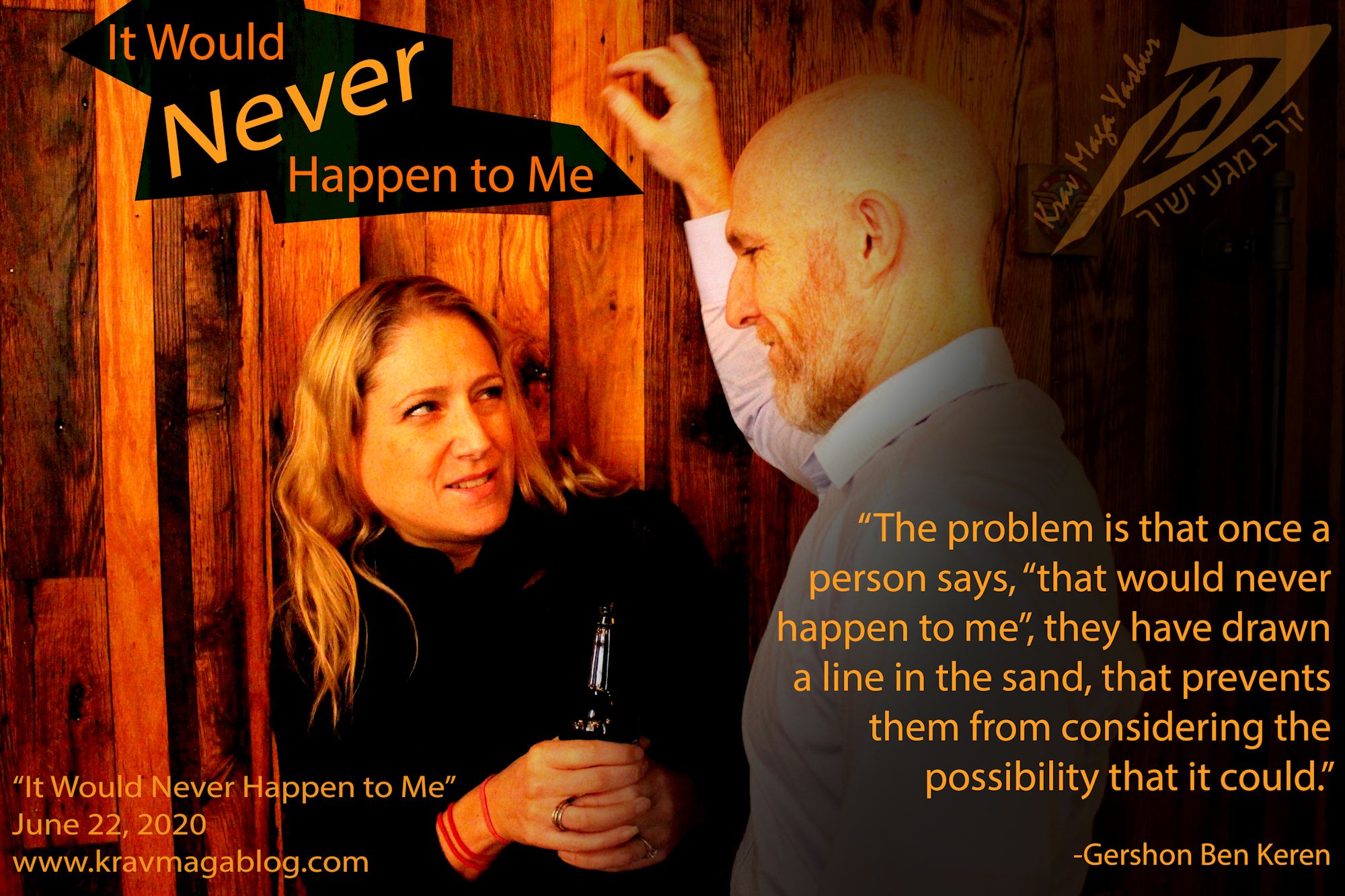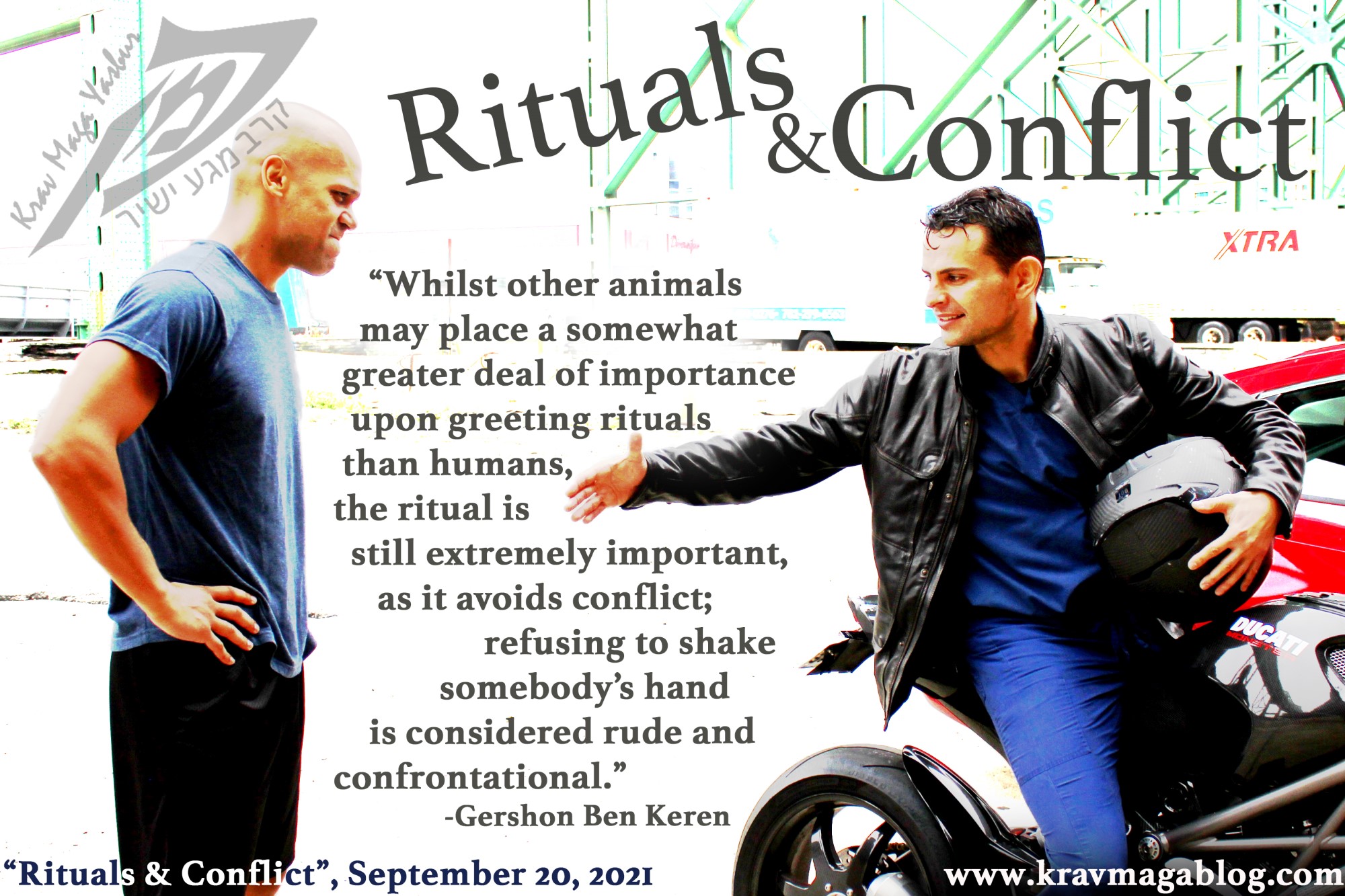Unintended Consequences, is an article written by Gershon Ben Keren, a 5th Degree Black Belt in Krav Maga, who teaches Krav Maga in Boston, MA. He has also authored three Amazon best-Selling Books on Krav Maga.
The human condition likes to believe that we live in an ordered world, and that our actions and behaviors produce predictable outcomes, however sometimes the way we act and behave results in unintended consequences: these occur because we don’t fully understand how a chain of events will play out, and act “inappropriately” in a situation, or because we apply something that worked successfully in one context in another e.g. on 9/11 after the planes hit the Twin Towers, many people went up towards the roofs, rather than towards the ground, as in 1993 after a fire started on the 62nd floor of the North Tower, 28 people had been airlifted to safety from the roof – going up, rather than down, wasn’t without precedence, and considering the slow rate at which people were evacuating downwards, due to sheer volume, the gamble of going up rather than following the crowd – and getting caught up in the swell of people – had a certain logic to it, though unfortunately some unintended consequences as well. In this article I want to look at why some of the things we may do to ensure our safety, can have some unintended consequences.
Many years ago, a man pulled a knife on me, whilst on a train. An asthmatic boy’s mother had asked a man who was sitting opposite her son, in a no-smoking carriage to put out his cigarette. He got aggressive and belligerent, she got aggressive and belligerent, etc., so I intervened, and suggested that he move to the smoking carriage (do they still have these?) which was a couple of carriages down. At this point he really started to have a go at the mother, and she was starting to recognize, albeit too late, that this was someone who couldn’t be reasoned with. He, sensing her fear, had gotten out of his seat and was now leaning over her son and shouting into her face, nose-to-nose. I pulled him away and pushed him a few steps back down the aisle and told him that he needed to back off. There are times when enforcement rather than de-escalation needs to be your go-to. His response was to pull a knife. Fortunately, nobody pulled the Emergency Cord/Brake on the train, and being only a few miles from the next station, we enjoyed a tense stand-off until the Transport Police were able to intervene and drag him away. Was this an Emergency? Yes, but pulling the emergency cord would have been the wrong response, and would probably have led to some unintended consequences e.g. the train would have been brought to a stop, and then possibly moved very slowly towards the station, or simply left on the tracks, until the transport police got there – none of these responses would have helped me or anyone in that carriage. However, I’d have understood why somebody might have felt compelled to pull the emergency cord.
Taking the stairs or the elevator in a building open to the public both contain their own risks e.g. people can gather in stairwells in a way they can’t in elevators; in an elevator you’re in an enclosed/confined space, whilst on a set of stairs you may have more space but you are operating on an uneven/non-level surface, etc. Unfortunately, crime statistics rarely record where in a building an offense occurs, and so it’s largely impossible to take an evidence-based approach to determining which is the safer method of transit. However, it is worth noting what happens when you press the emergency button in an elevator, as there will certainly be times when we ride them: like on the train, when you hit it, it will come to a stop. From a mechanical failure perspective, this approach makes sense e.g. if my car starts to billow smoke from the hood the first thing I’m going to do is pull over and stop. However, from a personal safety perspective, stopping and “locking” yourself in a confined space with an aggressor, isn’t a great option. If you’re aware of the next floor your coming to, pressing the button for that floor is preferable, or if caught by surprise, every button you can, etc. You don’t want to stop, you want to be moving to the nearest floor, to exit. Understand, that you may not be able to make a clean and quick exit, but if you can get a foot out, etc. to stop the door from closing again, you will keep the elevator, open and stationary – which will help facilitate your ability to exit.
When I first came to the U.S. I wasn’t aware of “trash talking” – where I come from if somebody is verbally abusive towards you, it’s getting physical very quickly; and in most cases it’s in your interest to act first. In both the UK, and US, assault is defined by somebody giving you a reason to fear for your safety (such as verbal abuse) and putting themselves in a position where they could cause you harm. When this happens, you have a right to defend yourself. Many people don’t understand this, and by their trash talking, put themselves in a position where their words may have unintended consequences e.g. somebody responds physically (just because social convention indicates that this isn’t the result doesn’t mean that everybody will respect this convention of “trash talking”). One of our instructors who currently works in law enforcement, told me of an incident where a driver got out of his car, to approach another driver who he felt had committed some injustice against him and had a can of pepper spray unloaded on him; he called 911 thinking the offense had been committed against him, rather than the other way round i.e. his actions had unintended consequences. We need to understand the chain of events that our actions may precipitate, and that these aren’t always in our favor e.g. we may think that an emergency necessitates us pulling the emergency cord, or pressing the emergency button, we may think that we have the “right” to stop our car, get out and approach another individual, and/or scream all our injustices against another individual into their face, however we might want to recognize that these actions and behaviors – even when justified – can have unintended consequences.
0 COMMENTS















